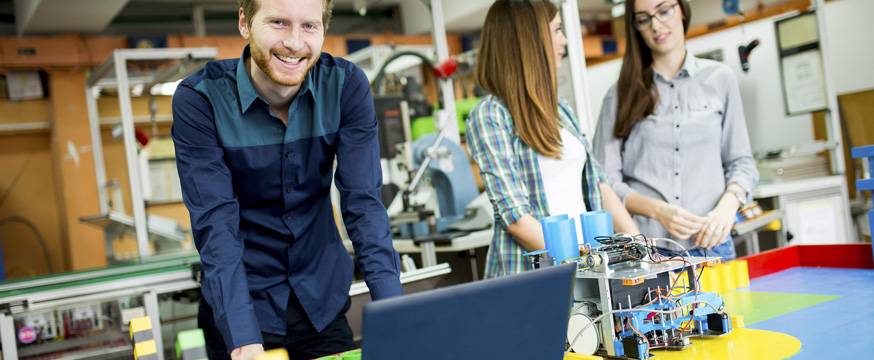
Work integrated learning: A lesson in good WIL
Research 23 Jun 2015 5 minute readSuccessful and sustainable work integrated learning programs share a number of key elements, as Daniel Edwards explains.
Work integrated learning: A lesson in good WIL
Ensuring that universities equip graduates with capabilities that not only meet the expectations of employers, but also facilitate a smooth and effective entrance for these people into the workforce is of immense importance for Australia’s productivity. Over the past decade, research has shown that work integrated learning (WIL) at university is an important means for enabling graduates to develop skills relevant to their future employment.
In the latter half of 2014 the Office of the Chief Scientist commissioned ACER to study the practice and application of WIL in science, technology, engineering and mathematics (STEM), with a particular focus on natural and physical sciences, information technology (IT) and agriculture departments in Australian universities.
A detailed ‘stocktake’ of WIL in practice in these disciplines involved the collection of information by interview, survey instruments, consultation with stakeholders and literature reviews. It also involved visits to every university in Australia to undertake interviews and consultation sessions in order to gather insights from more than 120 academics and support staff.
The outcomes of this study link in closely with the development of a National WIL Strategy, being driven by key university and employer stakeholder groups in Australia.
Defining WIL
‘Work integrated learning’ refers to a range of activities or programs that integrate academic learning with its application in the workplace. WIL approaches may be real or simulated and can occur in the workplace, at university, online, face-to-face or any combination of these.
Although WIL is often seen as synonymous with work placement, other WIL opportunities include industry relevant projects and simulated on-campus experiences.
WIL programs in Australian universities include, but are not limited to: industry based projects; internships; job shadowing; career development learning; clinical placements; fieldwork; project-based learning; teaching practicum; virtual projects and simulations; volunteering; and work placements.
Prevalence of WIL in STEM
The research has confirmed existing knowledge about Engineering - that it has vast coverage in WIL activities that involve specific industry placements. New findings gathered through this work in the other STEM disciplines found that IT tends to have the greatest extent of WIL activities embedded as ‘for credit’ and is especially strong for industry projects.
Agriculture and environmental sciences have comparatively large numbers of project-based and placement-based activities compared to other disciplines, although placements tend to be of less than six weeks’ duration.
Within the traditional sciences a number of placement- and project-based WIL activities exist, but in most cases they are situated in elective units and their coverage of the student population is relatively small.
Further detail relating to the extent to which WIL is included in Australian university STEM curriculum and the types of WIL in practice will be detailed in a forthcoming report based on the findings of the project.
Key aspects of good WIL
The study identified a number of key elements which are important in developing successful and sustainable WIL units.
Good WIL:
- is clearly linked to theoretical aspects of courses, ideally providing an ‘ah-ha’ moment to the student when the practical and theoretical merge;
- has strong engagement with industry;
- has well articulated expectations of both students and industry partners;
- has clear induction processes at the beginning and facilitated opportunities for reflection on experiences at the end – for both students and industry;
- has well established processes for logistics and support of students and industry; and
- has support from leadership and dedication from academic staff.
The specific factors that are needed in order to achieve this kind of ‘Good WIL’ include:
- increasing the value placed on WIL activities, and recognition of academics who develop such programs;
- working more closely to embed interaction with industry across all facets of the curriculum;
- developing processes for sustainable practice for expansion of WIL activities; and
- recognising the need for flexibility in the application of these activities within different disciplines and across institutional contexts.
Overcoming barriers to WIL
Difficulty in attracting enough employers to participate in WIL activities was by far the most significant impediment to expanding WIL mentioned by academics and support staff who participated in the study. Under-resourcing of WIL, in particular funding of support staff, was also highlighted as a hurdle to expansion.
The general lack of value placed on WIL, and resistance to committing to WIL activities, was also identified as a substantial inhibiting factor in expanding WIL in many institutions. It was highlighted that simply relying on the commitment of a small number of academics is not a sustainable way to expand WIL activities in science, IT and agriculture.
The study therefore suggests a greater focus on industry projects as a key tool for expanding participation in WIL in STEM areas. When designed and implemented well, industry projects can be efficient in terms of the number of employers required as well as educationally useful in developing the work readiness skills and experiences that WIL activities offer.
Further information:
This article is based on findings from a research project undertaken for the Office of Chief Scientist, published in Work Integrated Learning in STEM in Australian Universities.